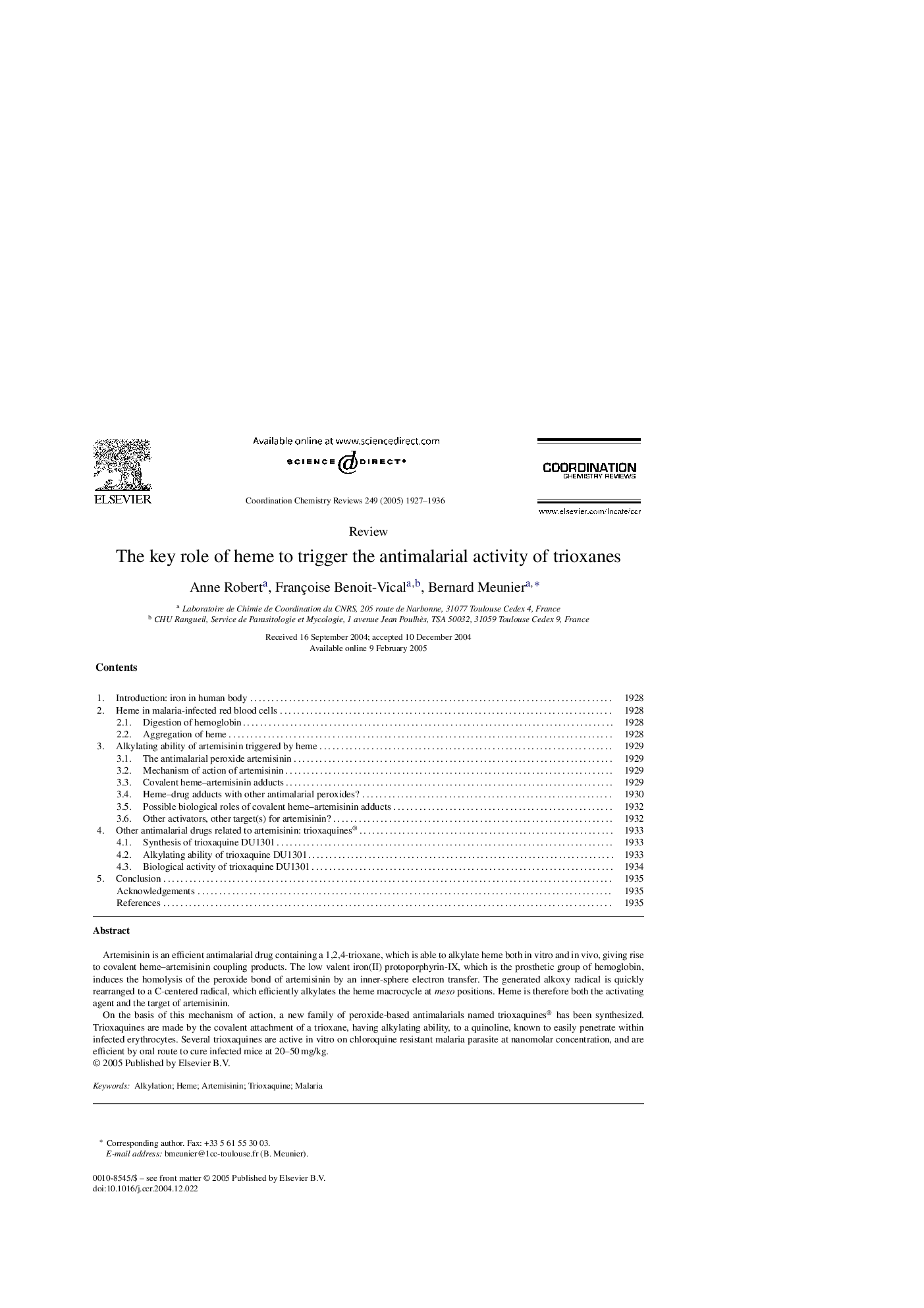| کد مقاله | کد نشریه | سال انتشار | مقاله انگلیسی | نسخه تمام متن |
|---|---|---|---|---|
| 1300820 | 1498846 | 2005 | 10 صفحه PDF | دانلود رایگان |

Artemisinin is an efficient antimalarial drug containing a 1,2,4-trioxane, which is able to alkylate heme both in vitro and in vivo, giving rise to covalent heme–artemisinin coupling products. The low valent iron(II) protoporphyrin-IX, which is the prosthetic group of hemoglobin, induces the homolysis of the peroxide bond of artemisinin by an inner-sphere electron transfer. The generated alkoxy radical is quickly rearranged to a C-centered radical, which efficiently alkylates the heme macrocycle at meso positions. Heme is therefore both the activating agent and the target of artemisinin.On the basis of this mechanism of action, a new family of peroxide-based antimalarials named trioxaquines® has been synthesized. Trioxaquines are made by the covalent attachment of a trioxane, having alkylating ability, to a quinoline, known to easily penetrate within infected erythrocytes. Several trioxaquines are active in vitro on chloroquine resistant malaria parasite at nanomolar concentration, and are efficient by oral route to cure infected mice at 20–50 mg/kg.
Journal: Coordination Chemistry Reviews - Volume 249, Issues 17–18, September 2005, Pages 1927–1936